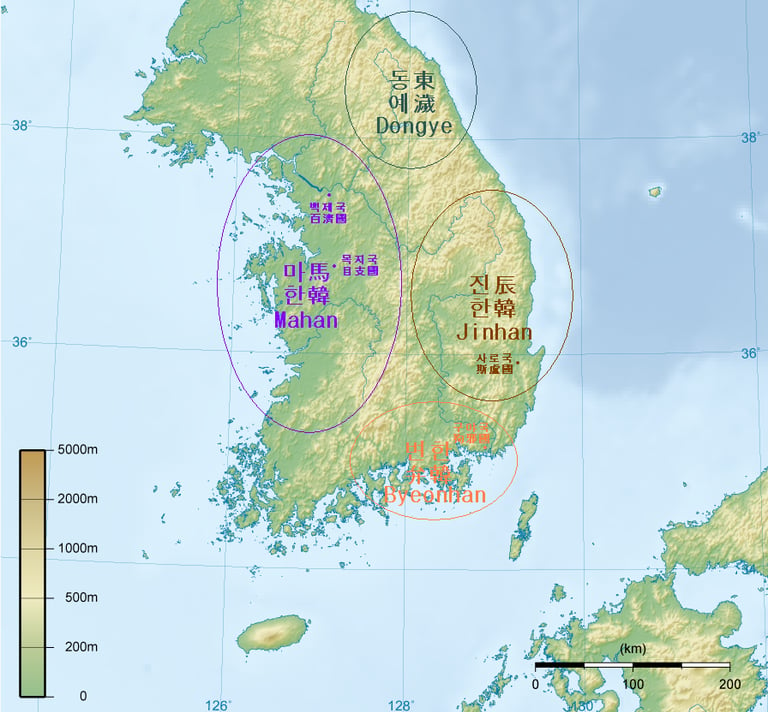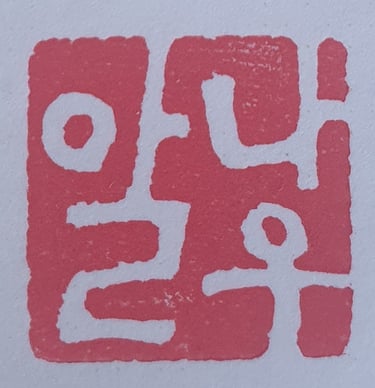The Proto-Three Kingdoms Period and the Three Kingdoms of Korea:
The awakening of the peninsula's giants


The history of Korea is marked by numerous legends and foundational events, but it was during the Proto-Three Kingdoms period that the foundations of the peninsula's three great powers were laid. This era, spanning from the 1st century BC to the 3rd century AD, already foreshadowed the rise of the kingdoms that would dominate Korea for over 700 years: Goguryeo, Baekje, and Silla. A pivotal time, blending myth and reality, it witnessed the first conflicts, alliances, and the creation of distinct cultures that we still see today in the country.
The Roots of the Three Kingdoms
Before the Three Kingdoms emerged as great powers, there was a mosaic of tribes and small kingdoms. The most influential were Gojoseon and its direct heirs, which gradually fragmented into three main entities: Baekje, Goguryeo, and Silla.
Goguryeo, located in the northern part of the Korean Peninsula, was a powerful kingdom with dreams of expanding its borders. It quickly gained a formidable military reputation and increasing influence over the region. Its people were renowned for their bravery and their ability to repel invasions, particularly from the Chinese Han emperors and later the Tang.
Baekje, located a little further south, thrived thanks to its trade relations with China and Japan. This kingdom was a vibrant cultural center, known for its arts, architecture, and its connection to Japanese culture. It had a lasting impact on the development of Japanese civilization through cultural missions.
Silla, the southernmost kingdom, held a strategic geographical position that allowed it to establish itself as the final bastion against its powerful neighbors. Initially more modest, Silla managed to assert itself through a strategic alliance with Tang China, allowing it to gain the upper hand and eventually reunify Korea.
The Three Kingdoms: The Rise of Power
The arrival of the Three Kingdoms marks a period of intense conflict, power struggles, and great transformations for Korea. Each kingdom sought to assert itself through force or diplomacy, forging alliances and engaging in battles with neighboring powers, especially China and Japan. Despite their rivalries, one thing was clear: these kingdoms constantly influenced each other, particularly in terms of culture, religion, and politics.
Goguryeo, under strategic kings like Gwanggaeto the Great, was the first to stand out by repelling Chinese invasions and expanding beyond the peninsula into Manchuria. This kingdom became a military stronghold and a cultural center, welcoming influences from the Asian continent while preserving its unique traditions.
Baekje, on the other hand, experienced glorious times as a hub of culture and commerce. Due to its position near the sea, Baekje became a key trade route, especially with Japan. The kingdom is also famous for its development of writing and its major contributions to Korean art and architecture.
Silla, though more isolated at first, showed great resilience. The kingdom used its geographical position to become a crossroads of cultures, gradually integrating Buddhist elements through its relations with China, which strengthened its political and religious power. Its alliance with Tang China marked a major turning point, leading to the reunification of the Korean Peninsula under its authority after centuries of rivalry.
A Period of Transformation and Exchange
Of course, it wasn’t just about battles and conquests. The Three Kingdoms period was also one of profound cultural transformations. Buddhism, for instance, was introduced to Korea during this time, initially by Baekje, before spreading widely to Goguryeo and Silla. It was an era when Korean culture was shaped through exchanges with China and Japan, but also through internal evolution, with each kingdom striving to distinguish itself while seeking to influence one another.
The End of the Three Kingdoms Era
This period of intense struggles came to an end after centuries of rivalry when Silla, through diplomacy and strategic alliances, succeeded in reunifying Korea in the 7th century. This was a pivotal moment in the history of the peninsula, marking the end of the Three Kingdoms but also the emergence of a new era for Korea.
Thus, the Three Kingdoms period was a fascinating mix of battles, alliances, cultural transformations, and influence on the Asian stage. Today, the legacy of these kingdoms is found in many aspects of Korean culture, from religious traditions to the arts, and in political and social structures.
A true historical melting pot that shaped Korea as we know it today.

